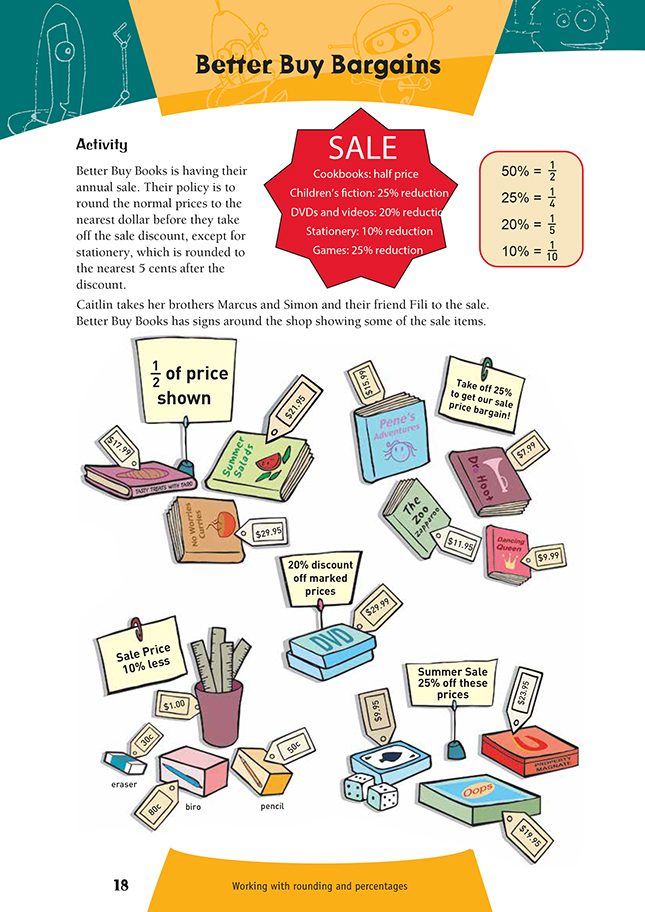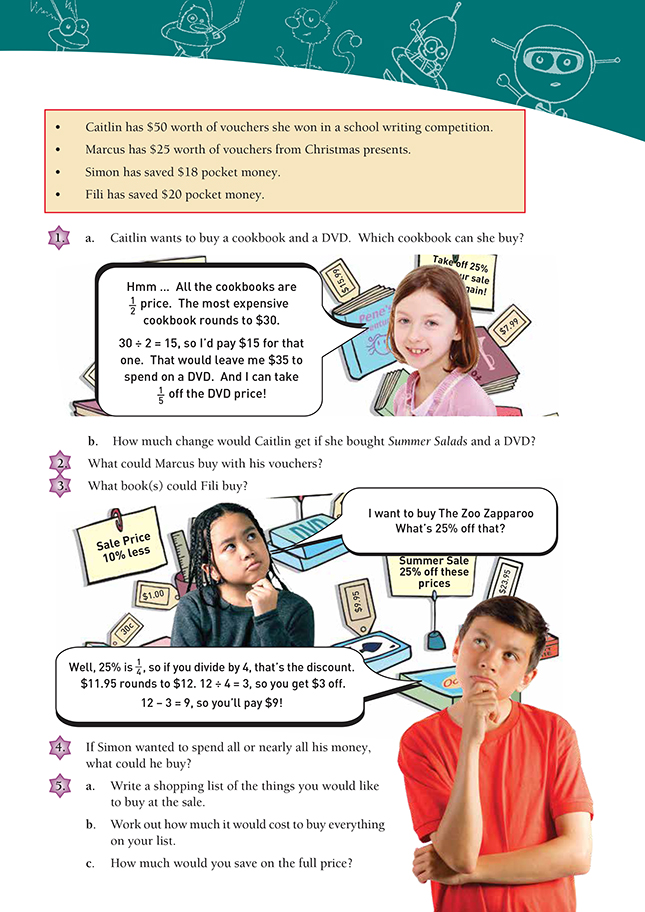This is a level 3 number activity from the Figure It Out series. It relates to Stage 6 of the Number Framework.
A PDF of the student activity is available.
Click on the image to enlarge it. Click again to close. Download PDF (370 KB)
round to the nearest dollar
find fractions and percentages of money
FIO, Level 3, Number, Book 2, Better Buy Bargains, pages 18-19
This activity provides a realistic context for rounding numbers and applying simple
percentage calculations.
Check that the students can round to the nearest dollar. All the items except the stationery on this page round up before the discount is taken off because they are priced at 95 cents or 99 cents. The stationery items are rounded to the nearest 5 cents after the 10 percent discount. This would see the rulers cost 90 cents, erasers cost 25 cents, pencils 45 cents, and biros 70 cents.
Ask the students to explain the connection between the percentages and fractions shown in the conversion chart at the top of the page. You may wish to use the Numeracy Project material masters 4-28 and 7-4 to help the students with the conversions in this activity and to practise other conversions (see Related Resources).
Have the students discuss a starting strategy for the problems. A chart showing all the relationships may be useful, for example:
The finished chart will show all the discount prices, so the students can concentrate on the list of purchases they need to do in questions 2 to 5.
Question 5c asks for a calculation of savings made. This could be worked out by adding a savings column to the chart.
Answers to Activity
1. a. A DVD would cost Caitlin $24. The most expensive cookbook is $15 at sale price, so she can buy any of the cookbooks as well as a DVD.
b. $15
2. Answers will vary. For example, he could buy:
1 DVD and 2 pencils ($24.90), the Property Magnate game, Dr Hoot, and 1 biro ($24.70), or The Zoo Zapparoo, the Oops game, a pencil, and an eraser ($24.70).
3. Fili could buy Pene’s Adventures or The Zoo Zapparoo (he can’t buy both) as well as one of the other two books.
4. Answers will vary. For example, Simon can’t buy a DVD, but he would spend his whole $18 if he bought the Property Magnate game or if he bought Pene’s Adventures and Dr Hoot. He would spend $17.75 if he bought Oops or No Worries
Curries at $15 each, plus a ruler, 1 biro, 2 pencils, and an eraser.
5. a.–c. Answers will vary.


